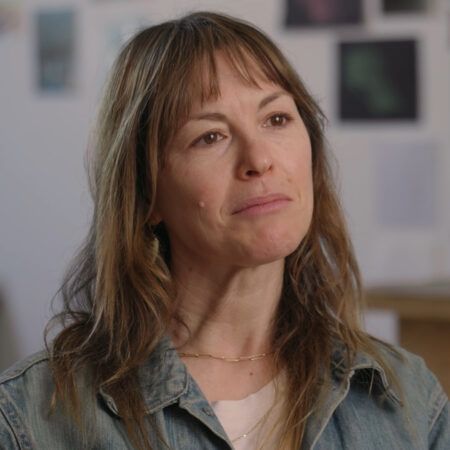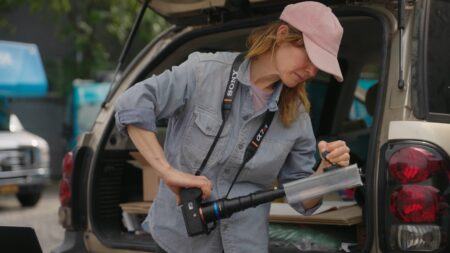Lucy Raven

Lucy Raven was born in Tucson, Arizona, in 1977, and currently lives and works in New York, New York. The artist received her BFA and BA from the University of Arizona in 2000 and her MFA from Bard University in 2009. Raven uses film, photography, and installation to examine processes of material transformation, hidden labor, and the build-up and collapse of infrastructures and images. To highlight the perspectives and ideologies that are produced and maintained through images, the artist uses experimental approaches to film and photography that encourage critical reflection on global systems of production, industry, and extraction.
Raven’s films and photography frequently focus on the extractive, industrial processes that are the foundation of contemporary life, creating works that visualize modes of production in experimental and critical ways. In China Town (2009), the artist documents the production of copper wire, from a mine in Nevada to a processing plant in Nanjing, China. The 51-minute stop-motion animation consists of 7,000 digital photographs taken at different facilities involved in the production of copper wire, scored with field recordings from each site. The discontinuous nature of images and sound in China Town reflects the disparate and discrete sites across the globe required to create something as seemingly simple as copper wire. Her 2014 film Curtains examines another globalized production model, the conversion of Hollywood films from 2D to 3D in post-production facilities in Asia, Europe, and North America. The film consists of ten stereoscopic photographs taken at different post-production offices, each appearing doubled on either side of the projection in the red and blue tints of 3D glasses for five minutes. Over the course of the film, the two images move toward one another, overlap, and continue to move to the other side of the projection, visually representing the slow and meticulous labor of converting films from 2D to 3D frame by frame.
In other films and sculptures, the artist repurposes the technologies and aesthetics she’s responding to as tools in the creation of new work. In Raven’s The Drumfire (2020-2025), a series consisting of four films, she explores the industrial and infrastructural means by which human activity transformed the American West through cycles of violence and development. “[The] series is bringing together these ideas around dynamic change and deformation that went into building the West, and how this country is founded on pressure,” says the artist. The four films, Ready Mix (2020), Demolition of a Wall (Albums 1 and 2) (2022), and Murderers Bar (2025), follow different processes of state change that have shaped the American landscape, using technologies and techniques of filmmaking to engage viewers in a critical reflection on subjects of each film: filming Ready Mix at 24 frames per second to create a liquid-like blur as materials rush down conveyor belts, working with an engineer to develop a system that registers movement as light for Demolition of a Wall (Album 2), and using an old helicopter mounted camera to create the feeling of the chase in Murderers Bar. In her sculptural installations Raven engages similar logics, as with the kinetic light sculptures Casters X-2 + X-3 (2020), developed from World War II anti-aircraft tracking technology and early computer graphics systems, repurposing the technologies and aesthetics of filmmaking and warfare she’s responding to as tools in the creation of this new work. Throughout her practice, the artist appropriates image-making techniques and tools to reflect their own histories and discover new potentials, while examining the embedded ideologies, power structures, and often-invisible labor that shape our visual and material world.
“Human interaction is integral to all kinds of transformation in the landscape.”
Lucy Raven
